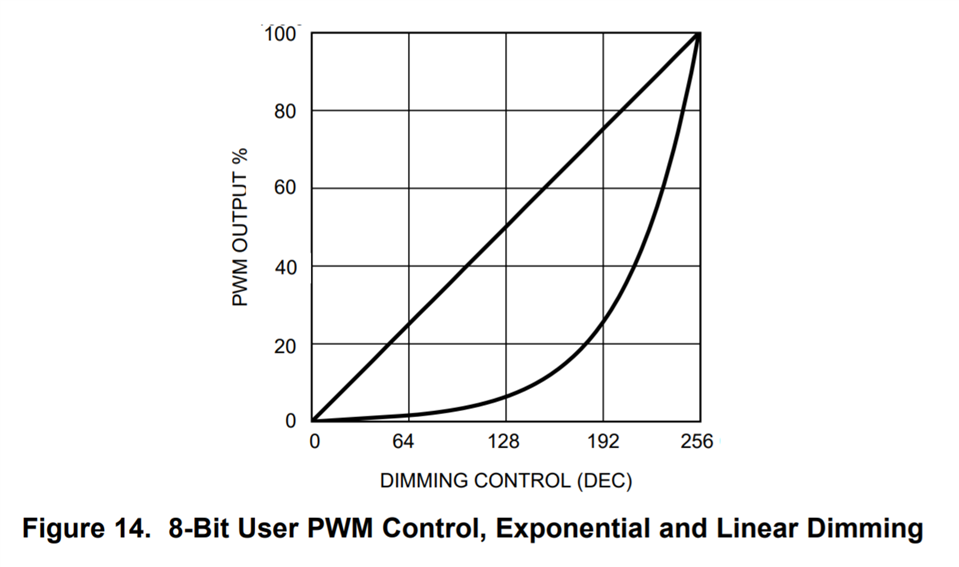Hello,
I intend to use the exponential scale for dimming the LEDs in LP5569. In page 13, the datasheet mentions that "... the PWM output percent can be approximated by the following two equations:"
y = 0.0125x – 0.0066 [%] (equation 1, for code <= 64)
y = 0.7835e^(0.0217x) [%] (equation 2, for code > 64)
I computed some values to analyze the PWM output when using those two equations:
y (1) = 0.0059% (equation 1)
y (64) = 0.7934% (equation 1)
y (65) = 3.21% (equation 2)
y (223) = 99% (equation 2)
y (255) = 198% (equation 2)
Question: are my calculations right? I found strange that:
a) y (255) returns 198% of duty cycle
b) the gap between y (64) and y (65) is equal to (3.21 % - 0.7934 %) = 2.42 % -> seems a huge discontinuity
c) such results seems not to match with Figure 14 (shown below)
I'd like to better understand the power consumption of LP5569 to define light patterns that are both attractive and power efficient. For this, knowing the output duty cycle given a PWM input register value (0...255) in exponential mode is of major importance.
Thanks for helping,
Bruno

